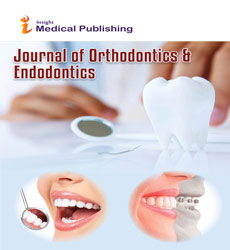Examination of Nasolabial Form Using a Mean 3D Facial Template in Unilateral Cleft Lip and Palate Patients
Sainika Swapna
DOI10.36648/2469-2980.21.7.e24
Department of Biotechnology, Osmania University, Hyderabad, Telangana, India
- Corresponding Author:
- Sanika Swapna
Department of Biotechnology
Osmania University, Hyderabad, Telangana, India
E-mail: sainika.swapna5@gmail.com
Received Date: May 20, 2021; Accepted Date: May 25, 2021; Published Date: May 30, 2021
Citation: Swapna S (2021) Examination of Nasolabial Form Using a Mean 3D Facial Template in Unilateral Cleft Lip and Palate Patients. J Orthod Endod Vol. 7 No.5:24.
Editorial
The treatment of patients with congenital anomaly and surface (CLP) involves many surgeries geared toward anatomical, functional, and aesthetic correction of the non-inheritable malformation. The final word treatment goal for these patients, however, should be to form a contented healthy individual whose deformity isn't a problem in their personal life. Deviation from the common might have an effect on the patient’s wellbeing; so, clinicians attempt to improve the patient’s look while not cleft stigmata. Facial look plays a task within the social interactions between people and influences a person’s perception of others.
It should additionally influence the standard of life (QoL) of the affected person Deviation from the common is troublesome to live. Two-dimensional analysis of the face, as performed within the past, is of restricted price. In distinction, three-dimensional (3D) imaging techniques are a lot of adequate. Studies of facial spatial property in patients with CLP mistreatment 3D imaging have shown that spatial property is most apparent within the centre a part of the face, together with the nose, lips, and partially the midface. during a study mistreatment 3D and stereo photogrammetry, it had been shown that young kids with differing kinds of unilateral cleft had a lot of facial spatial property within the midface, whereas controls showed a lot of spatial property within the chin space. once the unilateral cleft defect additionally concerned bony structures, spatial property within the midface was a lot of distinguished patients while not a cleft additionally show a good vary of spatial property, nonetheless no specific space looks to influence the aesthetic rating of facial look In distinction, spatial property within the nasolabial space in patients with a cleft has been related to a lower aesthetic ratings. However, it's not clear however the aesthetics are associated with deviations from a non-cleft reference face. Some way to review form variations between the faces of patients with and while not clefts is to construct a mean face of non-cleft people so compare it with faces of patients with clefts.
Mistreatment of this methodology and the variations formed within the midface will be quantified. This might be terribly helpful once making an attempt to enhance the looks of patients with orofacial clefts and avoid cleft stigmata. This study was performed to research the null hypothesis that a bigger deviation in nasal and labial form is expounded to a worse aesthetic nasolabial score in CLP patients.
This study was conducted at the congenital disorder Craniofacial Unit of Radboud University center, Nijmegen, European nation. The study was performed in accordance with the Declaration of capital of Finland with relevancy analysis in human subjects. The utilization of anonymous information gathered throughout routine patient care is in accordance with Dutch laws on medical analysis. A written statement was obtained from the institutional review board stating that this study doesn't fall at intervals the remit of the Medical analysis Involving Human Subjects Act (WMO). A total of sixty patients with a unilateral orofacial cleft, born between 1998 and 2004, were enclosed within the study. These procedures were performed by 2 surgeons with over ten years of expertise in cleft surgery.
Open Access Journals
- Aquaculture & Veterinary Science
- Chemistry & Chemical Sciences
- Clinical Sciences
- Engineering
- General Science
- Genetics & Molecular Biology
- Health Care & Nursing
- Immunology & Microbiology
- Materials Science
- Mathematics & Physics
- Medical Sciences
- Neurology & Psychiatry
- Oncology & Cancer Science
- Pharmaceutical Sciences
